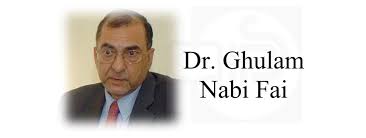The Facade of Democracy: Reality of Elections in Indian-Occupied Jammu and Kashmir (IIOJK)
By Qirat Mirza

 Since the transmogrification of India illegally occupied Kashmir from statehood to Union territories of Jammu-Kashmir and Ladakh, the IIOK is set to undergo general elections after 10 years. The polls will be held in three phases – September 18, September 25, and October 1. The counting of votes will take place on October 4 as announced by the Election Commission of India. While Indian media is portraying it as a success of democracy, and revival of normalcy in the territory compounded with the development of faith of the local people in the central government, one must not forget the political history of the region. For instance, the last elections were held in 2014 when Modi’s BJP formed a coalition government with the People’s Democratic Party of Mehbooba Mufti. However, the allegiance didn’t last long and BJP pulled out in 2018. That same year, then Governor SatyaPal Malik of the territory dissolved the assemblies. In 2019, the President’s rule was imposed under Article 356 of the constitution. This was followed by the abrogation of 370 and 35A, denuding the territory of statehood. Until now, the elections had been postponed by the Modi government on the pretext of security concerns in the region. It makes one wonder: if scrapping the special autonomous status of the territory was meant to bring normalcy to the area, then why have political processes been impeded for 10 years due to security concerns? Even, the decision to uphold elections now is directed by the Supreme Court’s verdict that bound the government to complete the process by Sep 30.
Since the transmogrification of India illegally occupied Kashmir from statehood to Union territories of Jammu-Kashmir and Ladakh, the IIOK is set to undergo general elections after 10 years. The polls will be held in three phases – September 18, September 25, and October 1. The counting of votes will take place on October 4 as announced by the Election Commission of India. While Indian media is portraying it as a success of democracy, and revival of normalcy in the territory compounded with the development of faith of the local people in the central government, one must not forget the political history of the region. For instance, the last elections were held in 2014 when Modi’s BJP formed a coalition government with the People’s Democratic Party of Mehbooba Mufti. However, the allegiance didn’t last long and BJP pulled out in 2018. That same year, then Governor SatyaPal Malik of the territory dissolved the assemblies. In 2019, the President’s rule was imposed under Article 356 of the constitution. This was followed by the abrogation of 370 and 35A, denuding the territory of statehood. Until now, the elections had been postponed by the Modi government on the pretext of security concerns in the region. It makes one wonder: if scrapping the special autonomous status of the territory was meant to bring normalcy to the area, then why have political processes been impeded for 10 years due to security concerns? Even, the decision to uphold elections now is directed by the Supreme Court’s verdict that bound the government to complete the process by Sep 30.
When this was not sufficient, the delimitation commission was formed to redraw the constituencies of Jammu and Kashmir. The 2022 report granted six additional seats to the Hindu majority Jammu, and one seat to the Muslim majority Kashmir in the Legislature comprising 90 seats. Consequently, the representation of Jammu increased to 43 percent while the representation of Kashmir remained at 47 percent. However, according to the 2011 census, Kashmir Valley’s population was seven million and Jammu’s 5.3m. This was done deliberately to deprive Muslims of their political rights that act as the sole impediment to pervading the Hindutva ideology in the region. Even the appointment of IAS officer Girish Chandra Murmu as the first lieutenant governor of the Union Territory (UT) of Jammu and Kashmir was driven by political objectives. For instance, since Modi personally wanted to monitor the situation in the valley, he appointed one of his confidantes as the administrative head of the territory.
This calls to mind the results of recent elections held in India when the ruling BJP party was celebrating the voter turn- out in the valley as a sign of Kashmir’s acceptance of India. Yet, many parliamentary districts throughout the valley voted against the proxies of the BJP; and the local parties were perceived as critical of BJP’s policies. While resorting to legal options to pursue one’s objectives is a welcome move by the people of the territory, the above-mentioned past events manifest that as long as statehood is not restored, an attempt to hold elections is nothing less than a mockery. Additionally, sans it, the legislative assembly of Kashmir is just a “toothless tiger”. For instance, all the legislative powers rest with the Indian Parliament while all the policymaking is done by the Capital. The legislative assembly of Kashmir is reduced to having powers over minimal subjects namely education and culture.
Furthermore, these elections seem to be a “double-edged sword” with regard to the aspirations of the local people of the territory. For instance, many in Kashmir deem it a fight to prevail upon India to reinstate its statehood. As the detained Formed Chief minister Omer Abdullah recounted,” the primary task of the newly elected assembly should be to demonstrate to India and the world that the people of Jammu and Kashmir reject the decisions made on Aug. 5”. However, some opposed the elections because they believed it would further entangle the territory in the Indian government’s brutal trickery. It is also demonstrated by the augmenting militant ambushes against the Indian forces in the territory. Consequently, many soldiers of the Indian army were killed. While India depicts Pakistan as a scapegoat for funding the militant groups in the territory, one must not forget that this is a result of India’s long, brutal occupation, muzzling dissent and quelling the demand for the self-determination.
Consequently, expecting that the elections in the territory, where people have been fighting for their civil, political, and religious rights and where a pall of gloom has hung over the region for decades, will close the gap, is like deceiving oneself. This is epitomized by the introduction of certain laws by the Indian government namely, Sedition Law (Section 124A of the Indian Penal Code) that is crowding out freedom of speech, the Armed Forces Special Powers Act (AFSPA), and Public Safety Act (PSA) that are being used as tools of subjugation. Additionally, the presence of thousands of troops propped up by the Acts to legitimize the mass killings, and detaining human rights activists by raiding public places has added to the pervasive feelings of doom and gloom. This demonstrates that good governance can’t be delivered as long as the people of the territory get their political rights to decide their future themselves. The region’s peace and stability are still counted on meeting the demand for reinstating the pre-2019 special status of the territory. Furthermore, this must be followed by demilitarization to allow people to engage in governance matters there.
The writer is a student of International Relations at International Islamic University Islamabad and Intern at Kashmir Institute of International Relations Islamabad.








